When asked to identify “monumental architecture” within the urban centers of California, Charles Moore nearly came up empty-handed. “This is, after all, a floating world,” Moore wrote in his landmark essay “You Have to Pay for the Public Life” (1965), “in which a floating population can island-hop with impunity” in cars functionally inseparable from human bodies. In Southern California, Moore argued, monumental architecture and “the public life” were relegated to theme parks, where an admission fee granted entrance to more pedestrian-scaled environments inspired by urban developments predating the automobile.
This is still true in the Coachella Valley, to a significant degree. Few public parks and libraries are available to the approximately 400,000 residents spread out across the desert region covering more than 600 square miles of Southern California—a population density of less than one person per acre—and even fewer are grounded by the elements of monumentality Moore considered essential to a dignified public realm.
Meanwhile, for over two decades, the Coachella Valley Music and Arts Festival has been one of the few venues offering the freedom and mobility of “the public life” in the region—for an entrance fee beginning at $499. The festival draws an additional 200,000 visitors to Coachella Valley to crowd the grounds of the 642-acre Empire Polo Club in Indio for two weekends each April yet has historically brought few lasting civic improvements to show for it. The boundary between the public life for sale within the festival grounds and the car-centered desert communities surrounding them has long been rock solid.
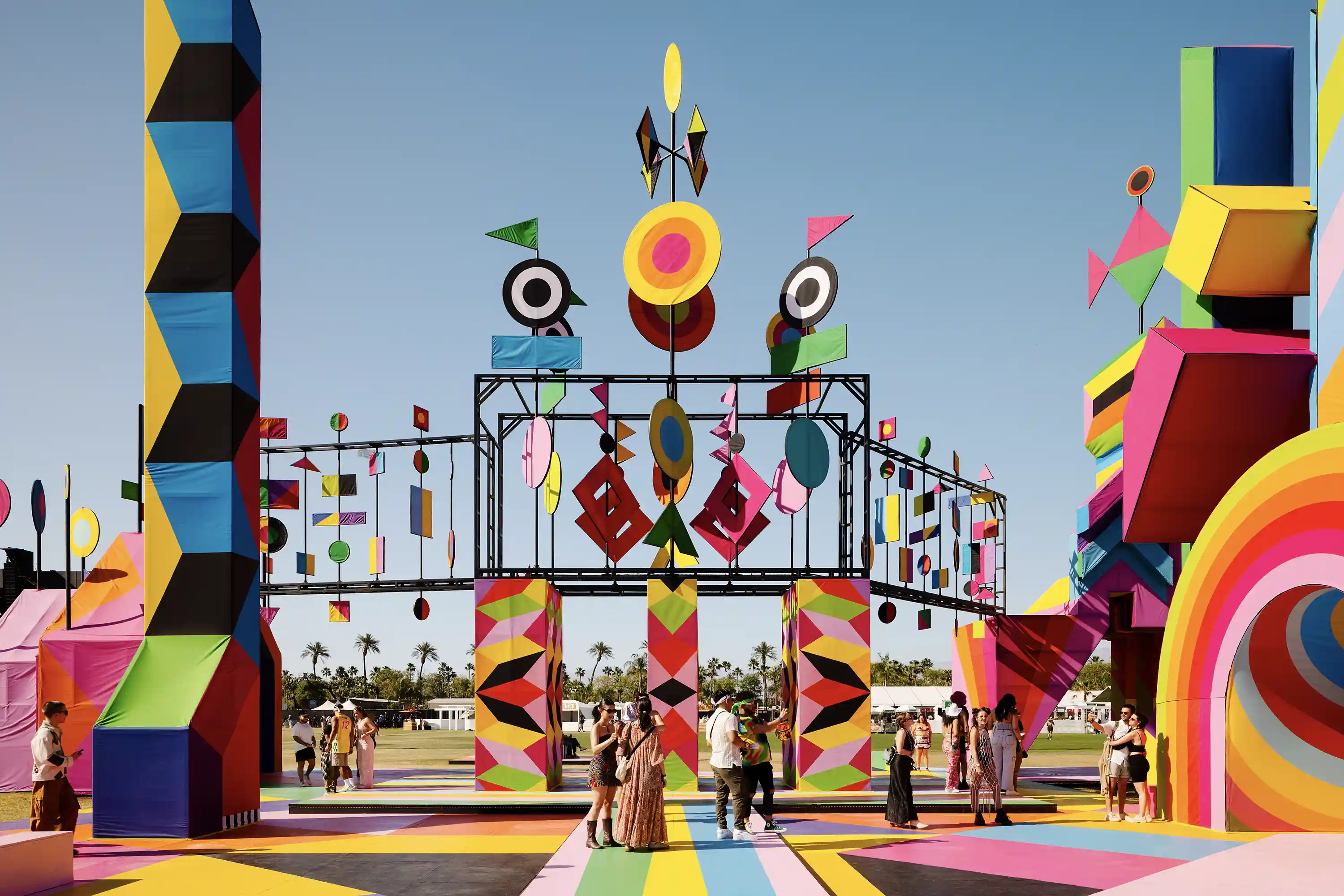
Dancing in the Sky by Morag Myerscough. Photo by Lance Gerber
But that edge has recently started to blur, in part, through a new arrangement. “Ever since I started at Coachella, one goal has been to permanently place as many of the temporary installations in public space as possible,” says Raffi Lehrer, the founder of Public Art Company, an artistic curatorial agency based in Los Angeles that has collaborated with Paul Clemente, art director for the festival and its organizer, Goldenvoice. Etherea, a 54-foot-tall wire mesh structure Italian sculptor Edoardo Tresoldi originally designed for the 2018 festival, now shimmers at the center of a small park near the city of Coachella’s downtown core. The assortment of baobab tree–inspired pavilions designed for the 2019 iteration by Pritzker Prize–winning architect Francis Kéré provides shade and a sense of place to the otherwise nondescript Dr. Carreon Park in Indio. Andrew Kovacs’ Colossal Cacti, which also appeared at the 2019 festival, are partially reinstalled within a new park in downtown Indio next to the city’s visitors center. “Humans are programmed to search for landmarks in wide, expansive spaces for their survival,” Lehrer explains. “They are drawn to parts of the built environment that can anchor them to a place.”
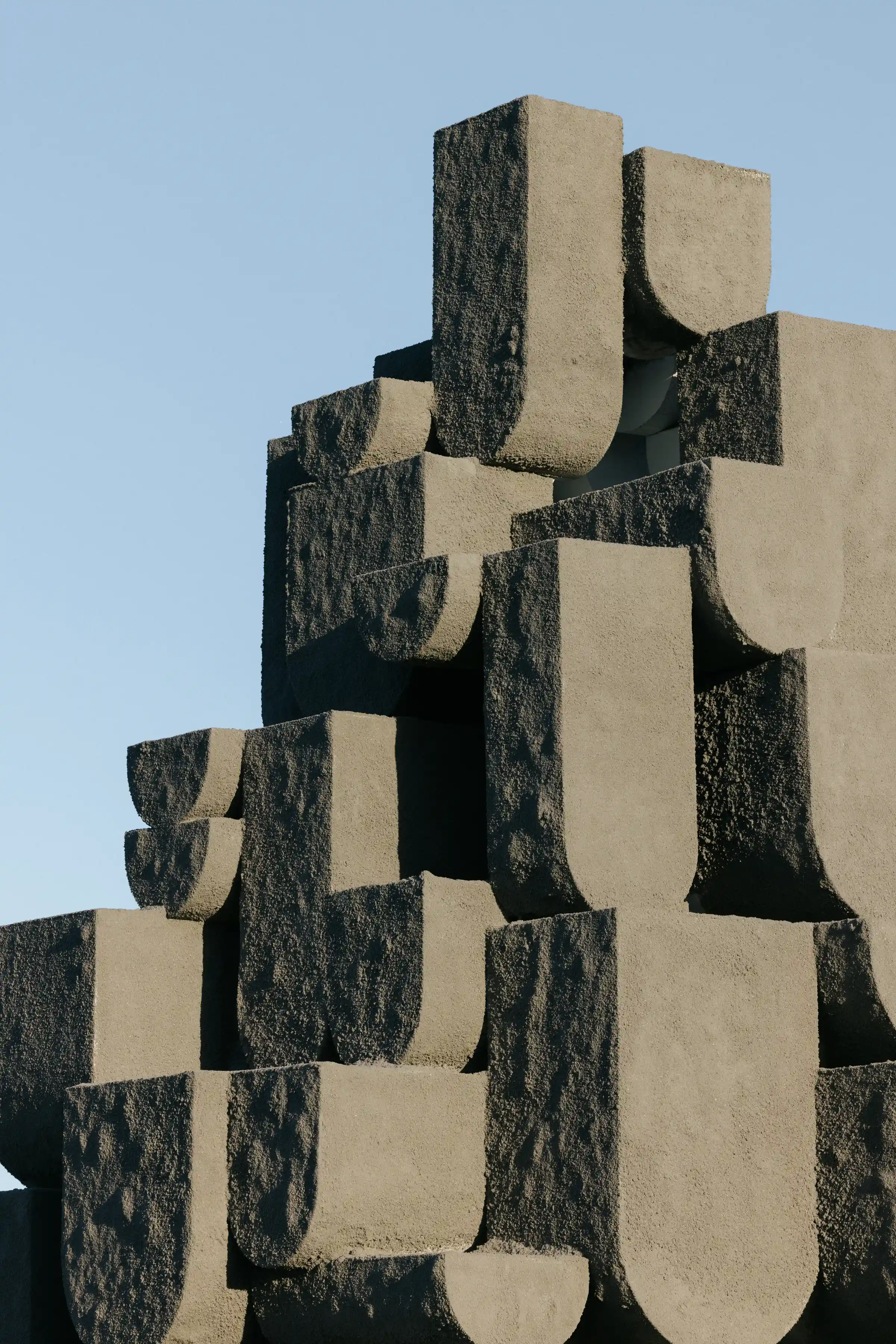
1
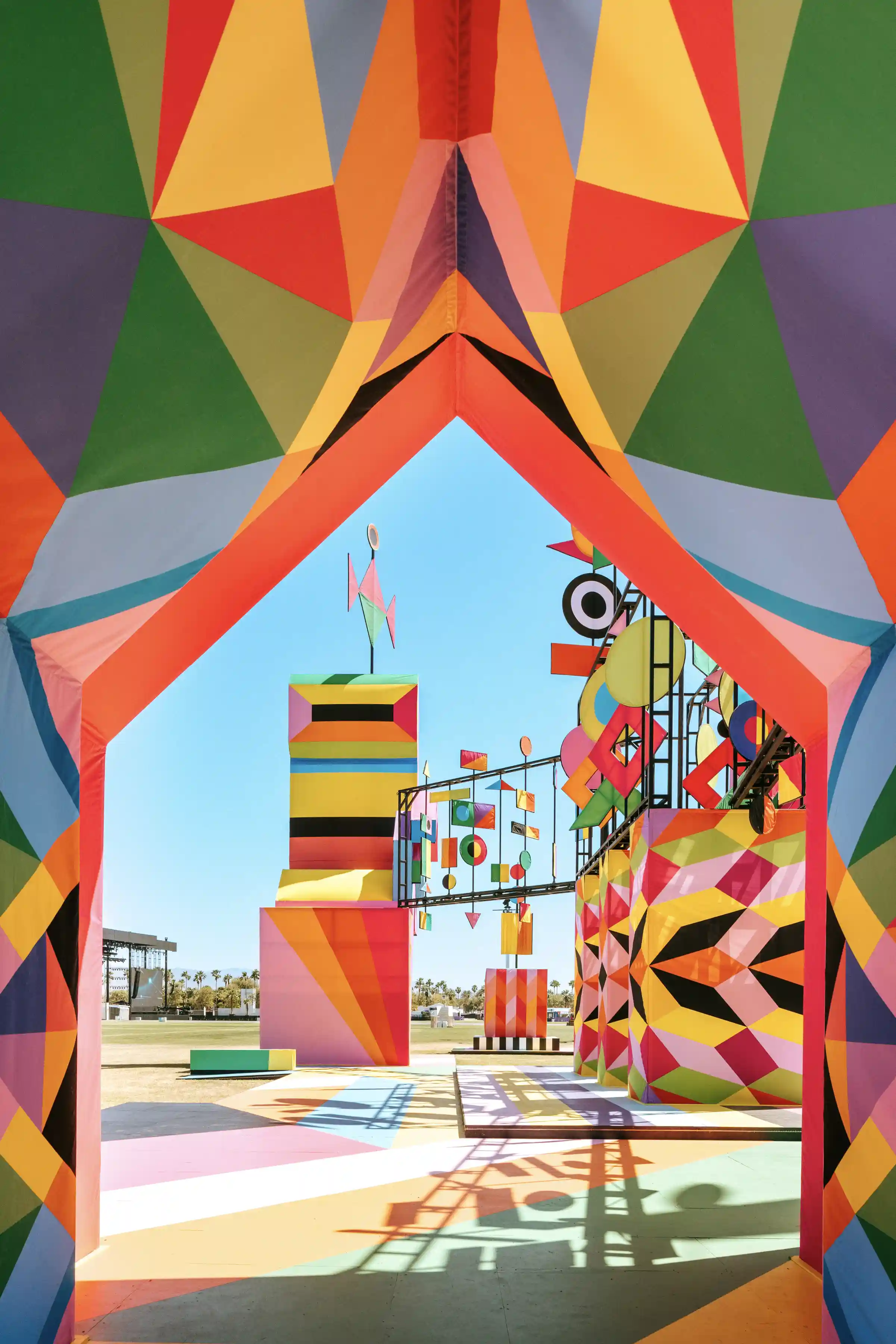
2
Babylon by Nebbia Works (1); Dancing in the Sky by Morag Myerscough (2). Photos by Lance Gerber
In addition to being easily identifiable landmarks from great distances, the three installations Public Art Company commissioned for this year’s festival are each imbued with qualities indispensable to any functional public space.
Monarchs: A House in Six Parts, designed by Cornell University architecture professors Leslie Lok and Sasa Zivkovic of HANNAH, applied 3D-printing construction technology—which has typically been used for housing prototypes—to the creation of urban furniture of every shape and size. The thick walls of Babylon, a 60-foot-tall spray foam-and-plywood megalith designed by the London-based design firm Nebbia Works, insulated festival-goers from the noise and wayward crowds outside its periphery and served as an identifiable landmark at which friends could touch base. The candy-colored creation by British artist Morag Myerscough, titled Dancing in the Sky, cast a long shadow popular during the sweltering afternoons from which its playful appendages and spinning gears were in perfect sight.
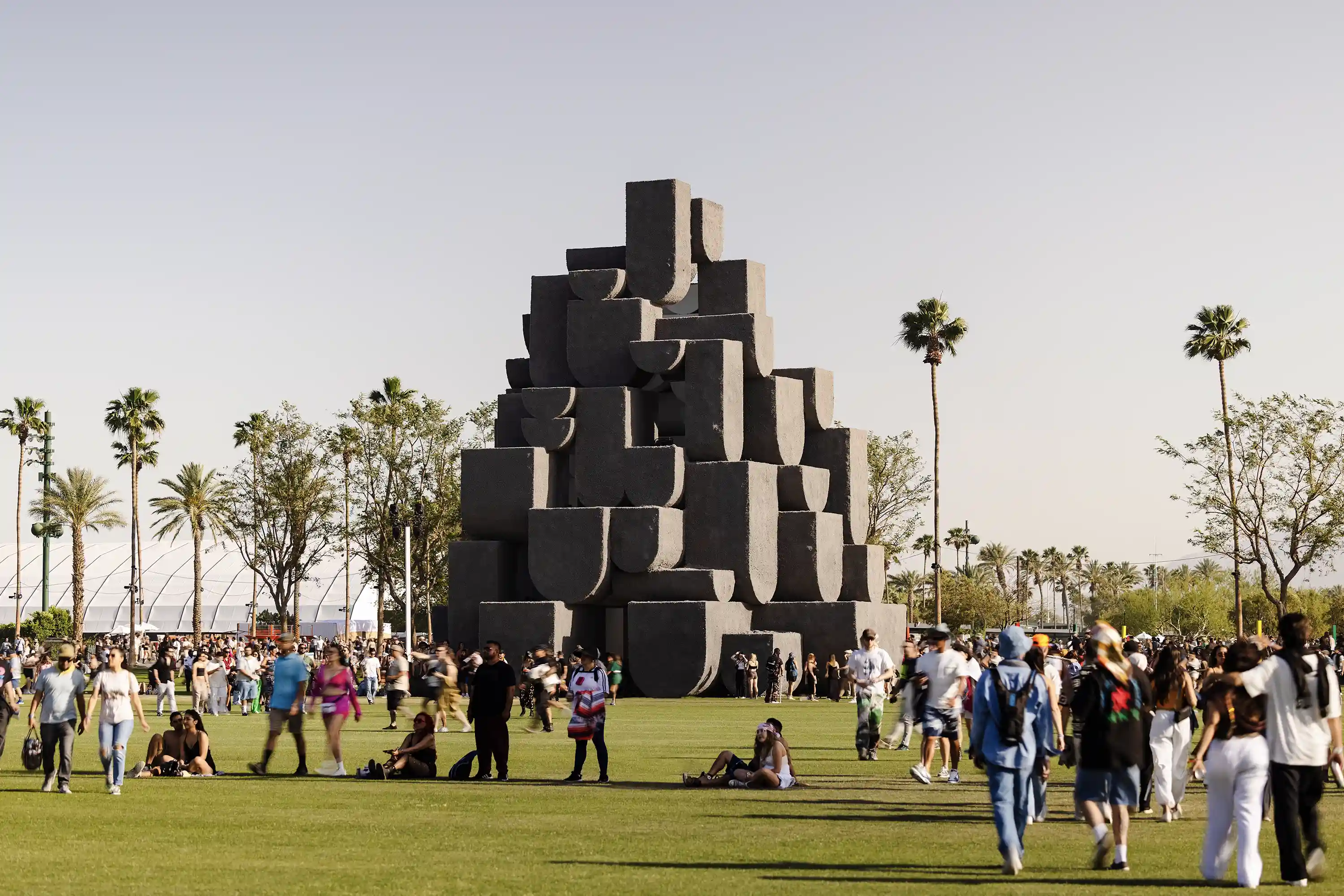
Babylon by Nebbia Works. Photo by Lance Gerber
To that end, this year’s cohort of commissioned designers each worked with Public Art Company on proposals for repurposing their installations as permanent outdoor structures, either in whole or in part, that are likely to be rebuilt in various locations throughout the region through input and participation from local community workshops. Imagine, for instance, the urban furniture of Monarchs placed along the main thoroughfares of Coachella Valley as seating for bus stops, the “boulders” of Babylon reassembled as several small versions of itself insulating pedestrians from traffic, or the steel structure of Dancing in the Sky as a jungle gym in a park currently without one.
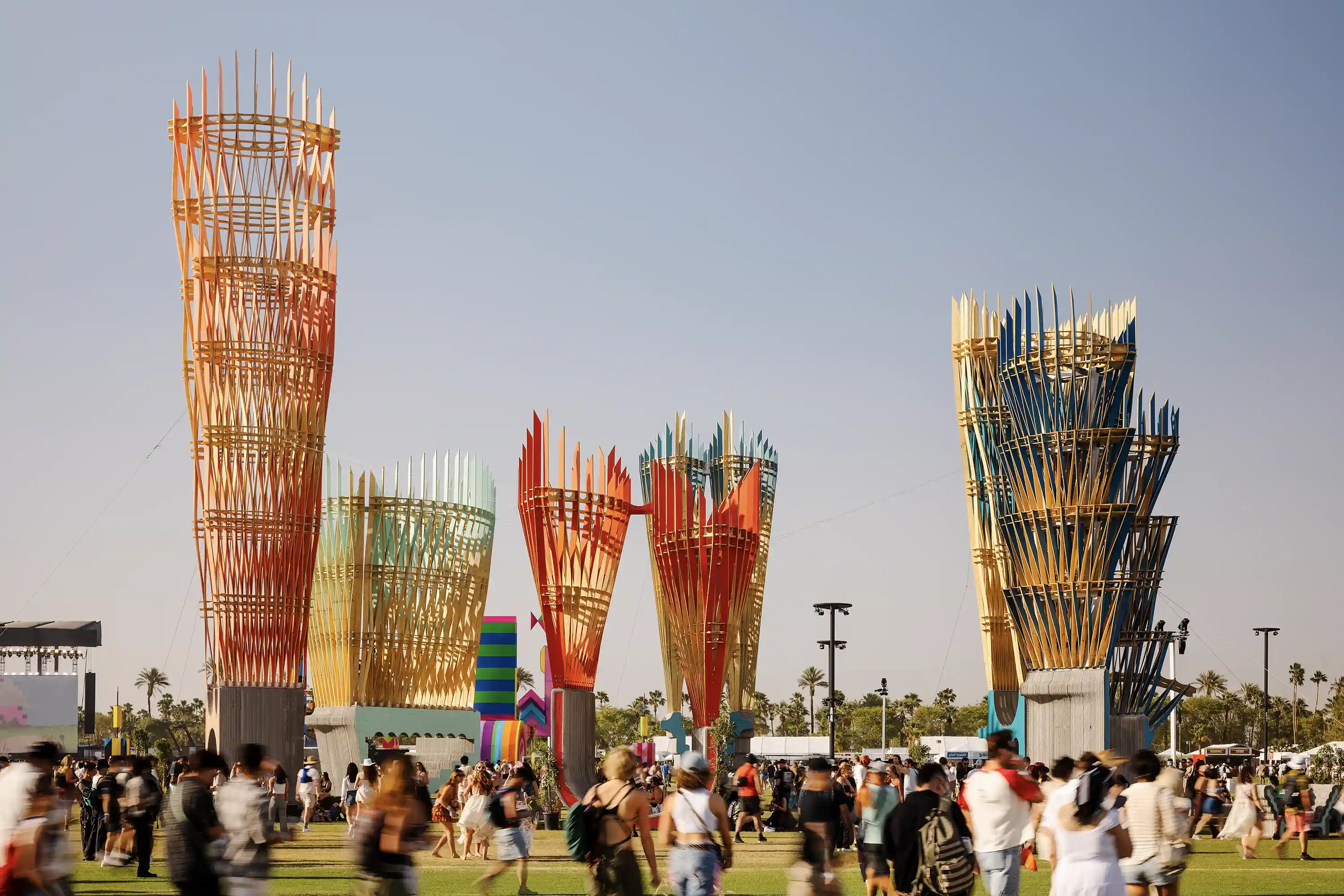
Monarchs by HANNAH. Photo by Lance Garber
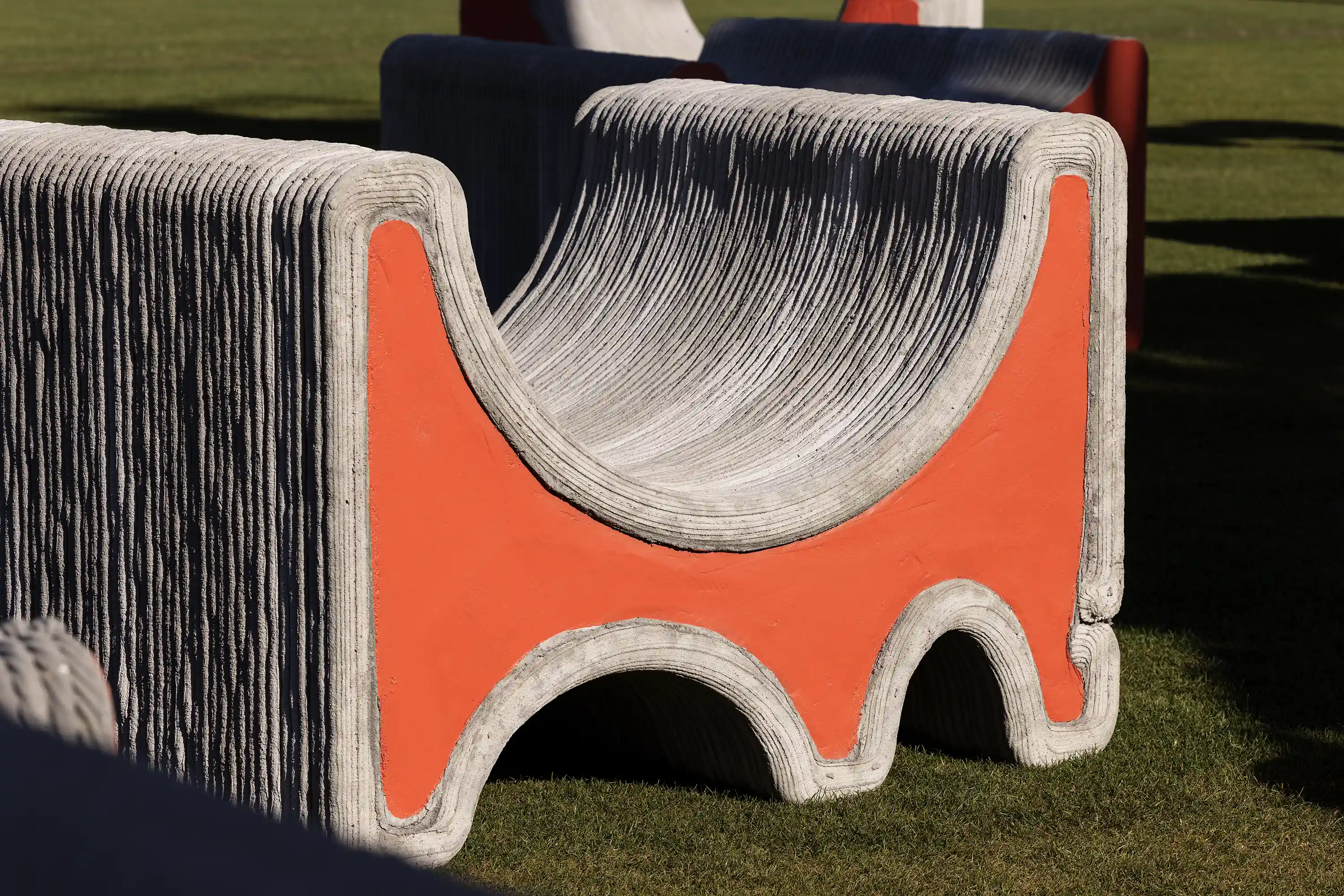
Monarchs by HANNAH. Photo by Lance Gerber
Festivals have a waste problem, and Coachella is certainly no exception. Its burgeoning temporary-to-permanent installation initiative, however, is one of the few in the U.S. to parallel the actions of more community-conscious, temporary architecture–commissioning cultural events, such as Melbourne’s MPavilion, which has reinstalled most of its prior commissions in busy public venues, including university campuses and the Melbourne Zoo. (The ultimate fate of the most-recent MPavilion 10, designed by Tadao Ando in his signature concrete, remains unclear.) Public Art Company’s initiative might signal to other high-profile events erecting temporary architectural installations—including Austin’s South By Southwest—that they are not only indebted to the communities from which they benefit, but that they have a responsibility to apply their profits toward lasting civic improvement.


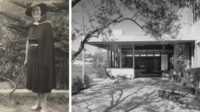
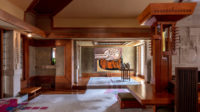
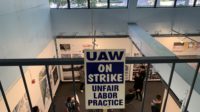
Post a comment to this article
Report Abusive Comment